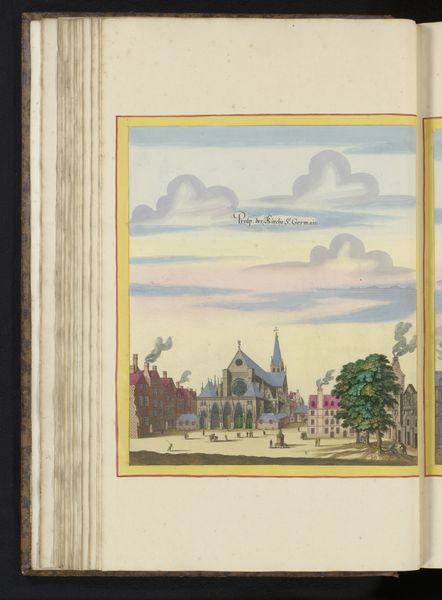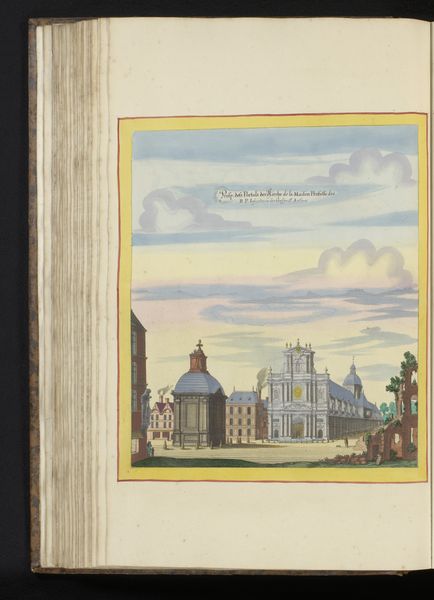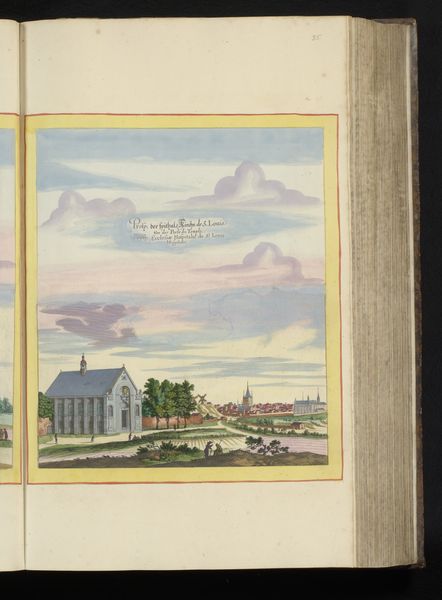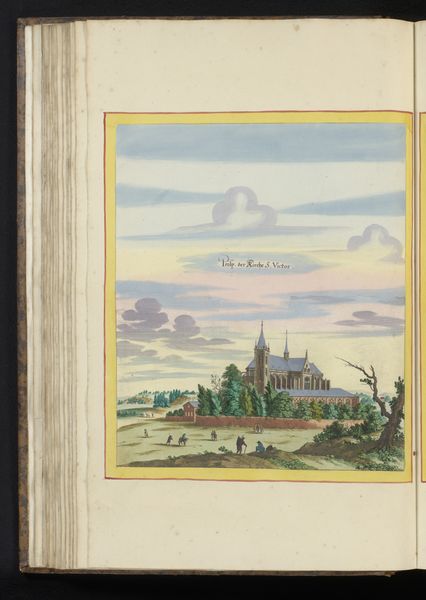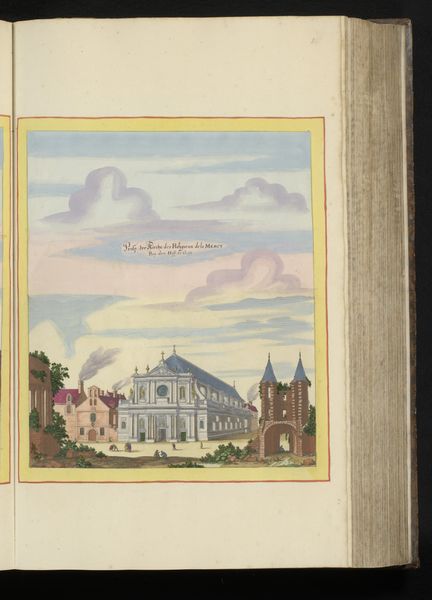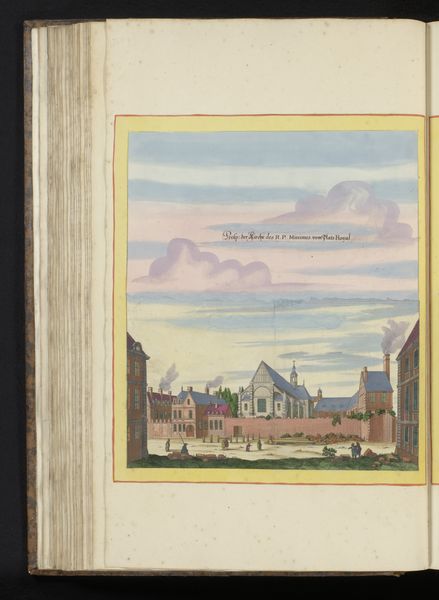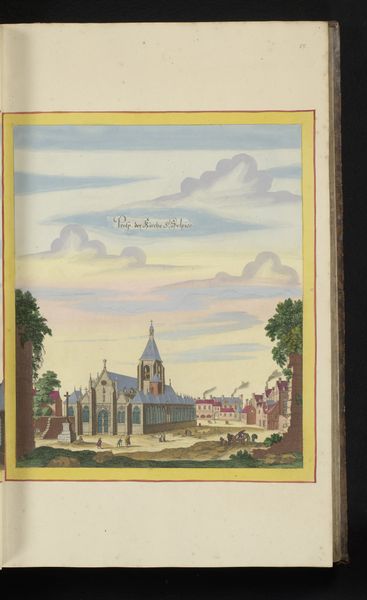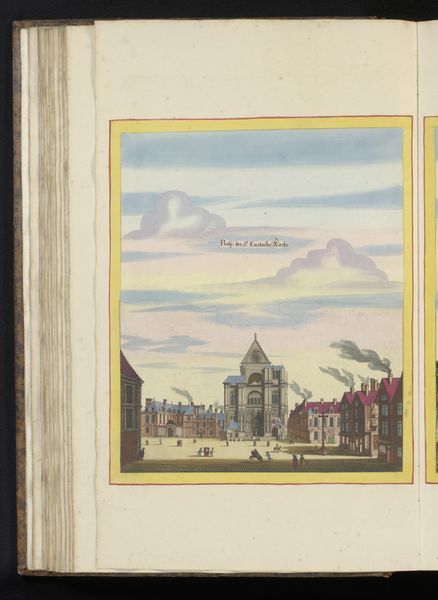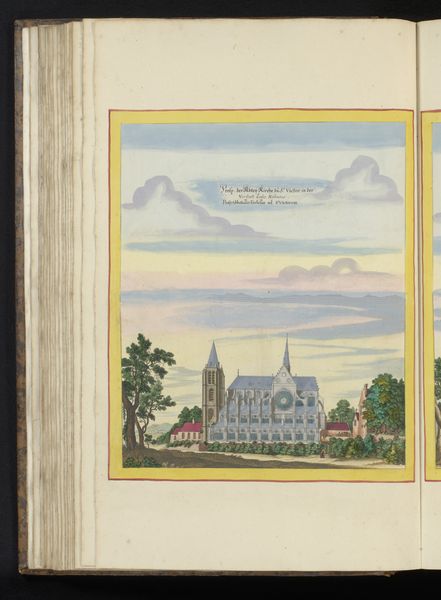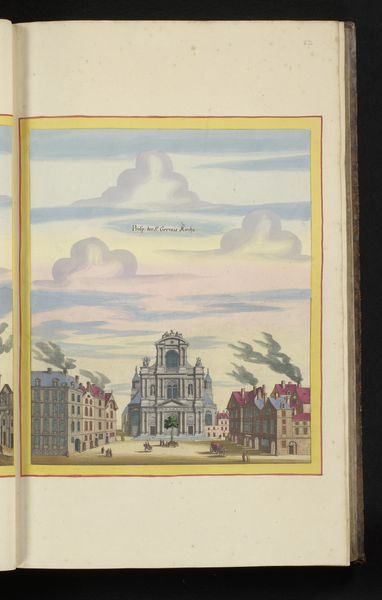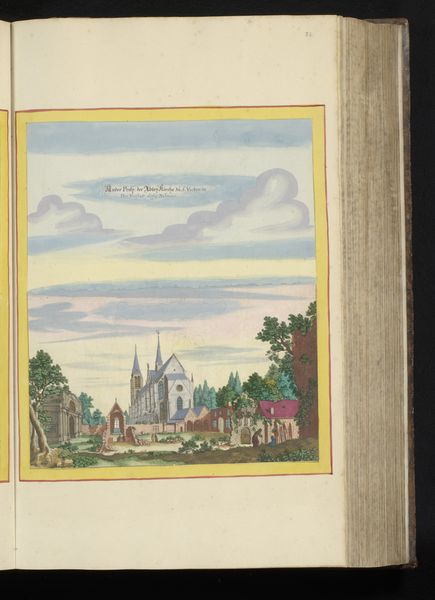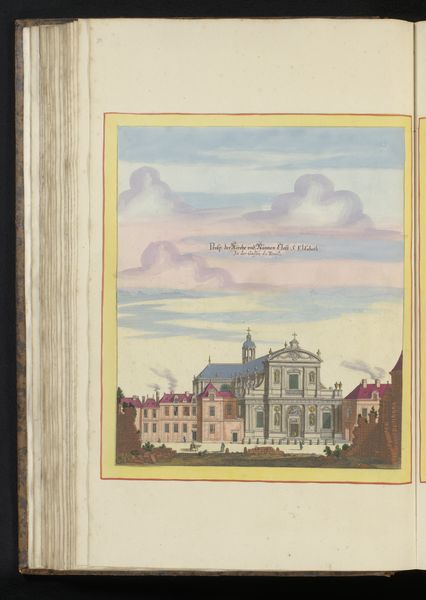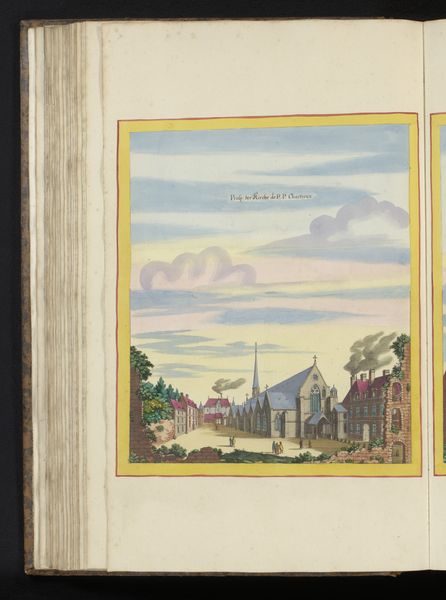
painting, watercolor
#
baroque
#
painting
#
landscape
#
watercolor
#
coloured pencil
#
cityscape
#
watercolor
Dimensions: height 338 mm, width 281 mm, height 534 mm, width 330 mm
Copyright: Rijks Museum: Open Domain
Editor: This is Matthäus Merian's "View of the Church of Saint-Séverin in Paris," from 1655, currently held in the Rijksmuseum. It seems to be a watercolor piece, with delicate colored pencil work, presenting a very formal view of the church amidst a cityscape. What details really stand out to you in this artwork? Curator: Well, focusing on materiality, consider the paper itself. Its relatively small size and inclusion within what appears to be a bound book indicates a mode of artistic production tied to documentation and potentially dissemination through printmaking, a key aspect of Merian's wider practice as a publisher. How does the materiality shape its accessibility, moving away from the grand, unique statement of large-scale easel painting? Editor: That’s interesting, I hadn't considered its format as influencing its purpose. So, it’s less about high art and more about broader distribution and access to images? Curator: Precisely! The very choice of watercolor – a portable and reproducible medium – speaks to a deliberate intention. Note, too, the precision of the linework and rendering of the architecture. This isn't about pure aesthetic expression; it's about a form of visual communication embedded in the emerging urban environment of 17th-century Paris. We can investigate the process of how such imagery supported developing forms of governance and mapping. Consider how it participated in forming an imagined sense of place, of Parisian identity constructed in print. What implications might this have had for the broader public’s access to or consumption of artistic renderings? Editor: So, it is about control of knowledge. This makes me wonder about who could afford such printed books at that time? Curator: Exactly. Who has access to this information becomes critical. Ultimately, understanding the means of production shifts the entire framework. Editor: This way of thinking completely alters my initial perception of the artwork! It seems there's much more to uncover about artistic intention once one delves into material considerations. Curator: Indeed! Considering artistic purpose through a lens of production broadens its story.
Comments
No comments
Be the first to comment and join the conversation on the ultimate creative platform.
